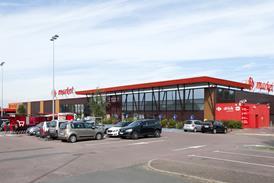While the sector seeks to play its part in tackling climate change by delivering more efficient buildings, there has also been much talk of bringing about greater circularity around how we consider construction materials.

This involves scaling back construction waste, reusing more ‘secondhand’ materials from existing buildings and rolling out material passports to support recycling efforts.
Beyond the industry’s concern for the environment, there are commercial reasons for considering the reuse of construction materials. Prospective tenants want to know all about a building’s carbon sustainability – it is often one of the first questions they ask when presented with plans for a prospective scheme.
Nonetheless, considering reuse is not without its challenges. Carefully dismantling a building to extract valuable resources can be a time-consuming and potentially costly exercise, between the time spent painstakingly deconstructing a building to the potential impact on rental revenues. But we have worked with some – including Landsec at 55 Old Broad Street (pictured) and British Land on Bishopsgate – that are on board with the approach of looking at buildings anew and determining what can be reused, where and how.

Such circularity and the practice of recycling are bolstered by the rollout of material passports. These give components a digital signature for present use, eventual recovery and future reuse. They also help people see the elements of a structure with fresh eyes.
The march towards greater reuse of materials also throws into relief how we should financially value a building when it reaches the end of its life. Historically, that figure has tended to be very low, but for the carbon narrative to work, there needs to be greater recognition around the existing or ‘waste’ elements of a building and how they could be put to work beyond the structure they were originally intended to serve.
This prompts a wider debate around how we build, how we deconstruct and – when the need arises – how we demolish.
Ed Williams is partner at Fletcher Priest Architects






























No comments yet